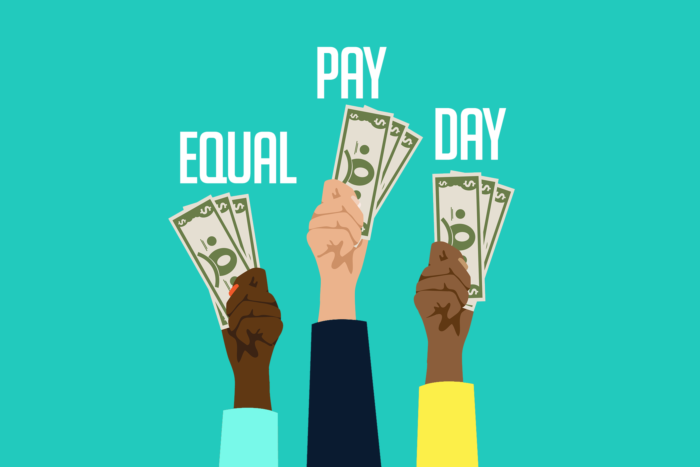Each week, Another Round Another Rally’s Education Director, Misty Kalkofen, serves up a different topic of interest to today’s hospitality community in her “Midweek Mindbender” Instagram series. While, for the past few months, we’ve been delving into the history and controversy surrounding the practice of tipping, future installments will cover everything from health insurance options for hospitality workers to the historic bars and eateries catering to marginalized community members. Hungry for more about hospitality history and emerging opportunities for bar and restaurant workers? Follow us on Instagram @anotherroundanotherrally!

Tipping: A Crash Course in The History of This Controversial Custom
Most Americans know that it’s customary to tip 20% for satisfactory service at bars and restaurants, but many don’t know much more about the practice or how it started. Originating in feudal Europe, the first known acts of tipping took place when aristocrats would pay their serfs or vassals extra money on top of their existing wages.
Then, wealthy travelers who’d visited Europe brought tipping back to the United States, hoping to show off their knowledge of the practices and lifestyles enjoyed by the European aristocracy. While some Americans rejected this at first in an effort to distance themselves from the ideas associated with feudalism, it soon became common practice across the nation following the emancipation of enslaved people.
Following the abolishment of slavery in America, many restaurant owners wanted to hire formerly enslaved people – but they didn’t want to pay them hourly wages. As a result, Black restaurant workers in many parts of the country had to rely entirely on tips. While this may sound like ancient history, in truth, many hospitality workers are still doing exactly that after turning over their $2.13 hourly wage to cover taxes and Social Security.

Tipping Today
Tipping hasn’t changed much in America since the New Deal era, when the Fair Labor Standards Act of 1938 dictated that employers only had to supplement their worker’s tipped income until they began making minimum wage. Currently, 15 states and Puerto Rico set their minimum wage for tipped workers at $2.13 an hour. Another 22 states, as well as the District of Columbia and the U.S. Virgin Islands, maintain a tipped minimum wage that falls somewhere between $2.14 and the nation’s current hourly minimum wage of $7.25.
Under current laws, an employer has to make up the difference if a worker’s tips and minimum wage pay do not together cover the federal minimum wage amount. Yet, more than 40% of the nation’s tipped workers claim their pay does not reach this threshold.

Disparities in Tipping
Tipping trends and patterns mean some bar and restaurant workers, among them female and POC workers, are less likely to make enough in tips to reach the federal minimum wage. About 50% of women in hospitality say they don’t make enough to meet these guidelines. About 58% of female hospitality workers of color say the same.
Yet, women and minorities hold more roles in tipped professions than their peers, representing 68% of tipped workers despite representing just 47% of the total labor force between 2016 and 2020.

Efforts to Enhance Fairness in Tipping
The Paycheck Fairness Act would give tipped workers the ability to sue for punitive damages when they are victims of age discrimination. It would also penalize employers who retaliate against workers for sharing information about wages. However, it has not yet made its way through congress despite landing in front of legislators 13 separate times.

Arguments for Eliminating the Tipped Minimum Wage
Research suggests that eliminating the tipped minimum wage would help ease inequality in hospitality and reduce poverty levels among bar and restaurant workers. Opponents argue that doing so would lead customers to tip less, but studies refute this sentiment. Opponents also argue that eliminating the tipped minimum wage would hurt employment, but research shows no difference in employment levels between tipped minimum wage states and One Fair Wage states, or those that ensure equal treatment of tipped workers.
Another common argument is that eliminating tipped minimum wage hurts small businesses. Yet, employers in One Fair Wage states saw stronger employment growth than those in tipped minimum wage states.

Low Tips, Wages Driving Workers Away
A record 11.5 million employees nationwide quit their jobs in a recent three-month span, and almost a million hospitality workers left the industry since the end of 2019. Of those who did, nine in 10 said low wages and tips contributed to their decisions to do so. Yet, almost 80% said they’d remain in the industry if they had access to a “full, stable livable wage with tips on top” – making more equitable pay the highest-ranking incentive desired by today’s bar and restaurant professionals.
Sources:
-
https://www.americanprogress.org/article/ending-tipped-minimum-wage-will-reduce-poverty-inequality/
-
https://www.bls.gov/oes/
-
https://19thnews.org/2021/06/paycheck-fairness-act-fails/
-
https://drive.google.com/file/d/1dUSJ0SGqlZTyi6nU7N9kKI7OKVDD4uwU/view
-
https://19thnews.org/2022/04/restaurant-workers-harassment-women-of-color/
-
https://onefairwage.site/unlivable
-
https://onefairwage.site/the-great-black-restaurant-worker-exodus
-
https://onefairwage.site/no-rights-low-wages-no-service

